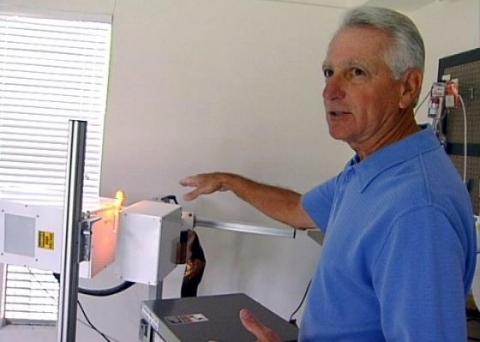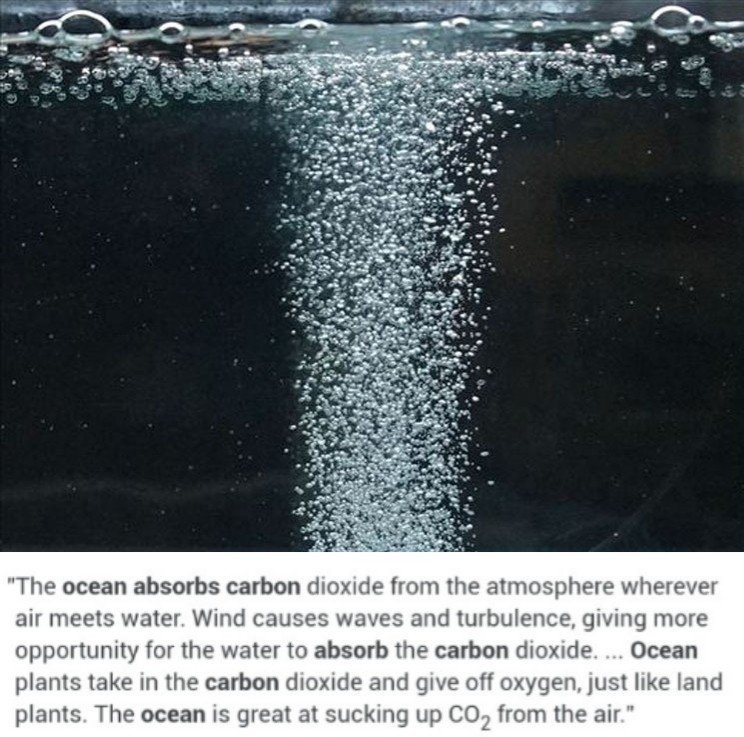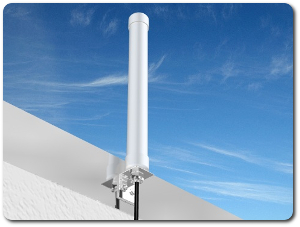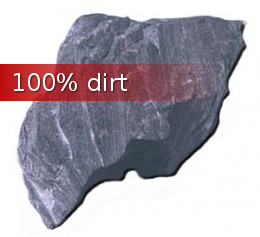Alternative fuel and cancer cure from salt water
Special Report, World news Tuesday, April 12th, 2011
You probably haven’t heard yet but an inventor, John Kanzius, created a device that can be used to cure cancer and then discovered an alternative fuel in salt water. Kanzius, an inventor, radio and TV engineer, one-time station owner and ham radio operator from Erie, Pennsylvania invented a method that has successfully treated cancer – inspired by his own such battle. He also demonstrated a device that generated flammable hydrogen containing gas from salt-water-solution by the use of radio waves. Kanzius discovered that under the right conditions, salt water can burn at high temperatures.
Kanzius’ journey began with a leukemia diagnosis in 2003. Faced with the prospect of debilitating chemotherapy, he decided he would try to invent a better alternative for destroying cancerous cells. What he came up with is his radio frequency generator (RFG), a machine that generates radio waves and focuses them into a concentrated area. Kanzius used the RFG to heat small metallic particles inserted into tumors, destroying the tumors without harming normal cells.
What does a cancer treatment have to do with burning salt water?
During a demonstration of the RFG, an observer noticed that it was causing water in a nearby test tube to condense. If the RFG could make water condense, it could theoretically separate salt out of seawater. Perhaps, then, it could be used to desalinize water, an issue of global proportions. The old seaman’s adage “Water, water everywhere and not a drop to drink” applies inland as well: Some nations are drying up and their populations suffering from thirst, yet the world is 70 percent ocean water. An effective means of removing salt from salt water could save countless lives. So it’s no surprise that Kanzius trained his RFG on the goal of salt water desalinization.
During his first test, however, he noticed a surprising side effect. When he aimed the RFG at a test tube filled with seawater, it sparked. This is not a normal reaction by water.
Kanzius tried the test again, this time lighting a paper towel and touching it to the water while the water was in the path of the RFG. He got an even bigger surprise — the test tube ignited and stayed alight while the RFG was turned on.
News of the experiment was generally met with allegations of it being a hoax, but after Penn State University chemists got their hands on the RFG and tried their own experiments, they found it was indeed true. The RFG could ignite and burn salt water. The flame could reach temperatures as high as 3,000 degrees Fahrenheit and burn as long as the RFG was on and aimed at it.
But how could salt water possibly ignite? It has to do with hydrogen. In its normal state, salt water has a stable composition of sodium chloride (the salt) and hydrogen and oxygen (the water). But the radio waves from Kanzius’ RFG disrupts that stability, breaking the bonds that hold the chemicals in salt water together. This releases the combustible hydrogen molecules, and the heat output from the RFG ignites them and burns them indefinitely.

Japan manufactured hydrogen fueled Honda FCX Clarity
So will our cars soon run on salt water instead of gasoline? The US and Japan automakers have already produced cars and trucks that run on hydrogen fuel. With such a device, instead of using gasoline to power our cars and trucks we can now power them with water. Using water as a fuel is environmentally friendly. Hydrogen fuel from water has zero emissions. No more worries of catastrophic oil spills. An end to global warming. No more wars to seize control of the oil reserves of foreign states. A cure for cancer.
Short URL: https://presscore.ca/news/?p=2239

 The Halifax International Security Forum was founded in 2009 as a propaganda program within the German Marshall Fund (founded June 5, 1972 by West German Chancellor Willy Brandt) by the Crown in Canada using Crown Corp ACOA & DND funds. The Halifax International Security Forum is a front that is used to recruit top US, UK and Canadian gov and military officials as double agents for Canada's WWI, WWII enemy and wage new Vatican Germany Cold War.
High Treason: s.46 (1) Every one commits high treason who, in Canada (c) assists an enemy at war with Canada, ..., whether or not a state of war exists". Every one who, in Canada assists Canada's enemies wage "piecemeal WWIII" Cold War by organizing, funding and participating in the Germany government politically and militarily benefitting / lead Halifax International Security Forum is committing high treason.
The Halifax International Security Forum was founded in 2009 as a propaganda program within the German Marshall Fund (founded June 5, 1972 by West German Chancellor Willy Brandt) by the Crown in Canada using Crown Corp ACOA & DND funds. The Halifax International Security Forum is a front that is used to recruit top US, UK and Canadian gov and military officials as double agents for Canada's WWI, WWII enemy and wage new Vatican Germany Cold War.
High Treason: s.46 (1) Every one commits high treason who, in Canada (c) assists an enemy at war with Canada, ..., whether or not a state of war exists". Every one who, in Canada assists Canada's enemies wage "piecemeal WWIII" Cold War by organizing, funding and participating in the Germany government politically and militarily benefitting / lead Halifax International Security Forum is committing high treason.
 Please take a moment to sign a petition to
Please take a moment to sign a petition to 









































 1917 Code of Canon Law, Canon 185 invalidates (voids) all papacies since October 26, 1958 due to the fact Cardinal Giuseppe Siri was elected Pope on the Third ballot on Oct 26 1958 but the new Pope Gregory XVII was illegally prevented from assuming the office. A Pope was elected on October 26, 1958. Thousands of people witnessed a new Pope being elected by seeing white smoke and millions were informed by Vatican radio broadcasts beginning at 6:00 PM Rome time on October 26, 1958. The papacy of Francis, Benedict, John Paul II, John Paul I, Paul VI, John XXIII and any and all of their respective doctrines, bulls, letter patents and the Second Vatican Council are all invalidated (having no force, binding power, or validity) by Canon 185 because the 1958 conclave of cardinals elected Cardinal Giuseppe Siri Pope on Oct 26 1958. Cardinal Giuseppe Siri accepted the papacy by taking the name Pope Gregory XVII but was illegally prevented from assuming his elected office.. According to Canon 185 Cardinal Angelo Giuseppe Roncalli illegally assumed the papacy 2 days later by fraud and grave fear, unjustly inflicted against Cardinal Giuseppe Siri who was lawfully elected Pope Gregory XVII. Because no Pope has been lawfully elected since October 26, 1958 the Holy See (la Santa Sede/Seat) remains vacant.
1917 Code of Canon Law, Canon 185 invalidates (voids) all papacies since October 26, 1958 due to the fact Cardinal Giuseppe Siri was elected Pope on the Third ballot on Oct 26 1958 but the new Pope Gregory XVII was illegally prevented from assuming the office. A Pope was elected on October 26, 1958. Thousands of people witnessed a new Pope being elected by seeing white smoke and millions were informed by Vatican radio broadcasts beginning at 6:00 PM Rome time on October 26, 1958. The papacy of Francis, Benedict, John Paul II, John Paul I, Paul VI, John XXIII and any and all of their respective doctrines, bulls, letter patents and the Second Vatican Council are all invalidated (having no force, binding power, or validity) by Canon 185 because the 1958 conclave of cardinals elected Cardinal Giuseppe Siri Pope on Oct 26 1958. Cardinal Giuseppe Siri accepted the papacy by taking the name Pope Gregory XVII but was illegally prevented from assuming his elected office.. According to Canon 185 Cardinal Angelo Giuseppe Roncalli illegally assumed the papacy 2 days later by fraud and grave fear, unjustly inflicted against Cardinal Giuseppe Siri who was lawfully elected Pope Gregory XVII. Because no Pope has been lawfully elected since October 26, 1958 the Holy See (la Santa Sede/Seat) remains vacant.
 Hold the Crown (alias for temporal authority of the reigning Pope), the Crown appointed Governor General of Canada David Lloyd Johnston, the Crown's Prime Minister (servant) Stephen Joseph Harper, the Crown's Minister of Justice and Attorney General Peter Gordon MacKay and the Crown's traitorous military RCMP force, accountable for their crimes of treason and high treason against Canada and acts preparatory thereto. The indictment charges that they, on and thereafter the 22nd day of October in the year 2014, at Parliament in the City of Ottawa in the Region of Ontario did, use force and violence, via the staged false flag Exercise Determined Dragon 14, for the purpose of overthrowing and besieging the government of Canada contrary to Section 46 of the Criminal Code. In a society governed by the rule of law, the government and its officials and agents are subject to and held accountable under the law. Sign the online
Hold the Crown (alias for temporal authority of the reigning Pope), the Crown appointed Governor General of Canada David Lloyd Johnston, the Crown's Prime Minister (servant) Stephen Joseph Harper, the Crown's Minister of Justice and Attorney General Peter Gordon MacKay and the Crown's traitorous military RCMP force, accountable for their crimes of treason and high treason against Canada and acts preparatory thereto. The indictment charges that they, on and thereafter the 22nd day of October in the year 2014, at Parliament in the City of Ottawa in the Region of Ontario did, use force and violence, via the staged false flag Exercise Determined Dragon 14, for the purpose of overthrowing and besieging the government of Canada contrary to Section 46 of the Criminal Code. In a society governed by the rule of law, the government and its officials and agents are subject to and held accountable under the law. Sign the online  Two of the most obvious signs of a dictatorship in Canada is traitorous Stephen Harper flying around in a "military aircraft" and using Canadian Special Forces "military" personnel from JTF2 and personnel from the Crown's traitorous martial law "military" RCMP force as his personal bodyguards.
Two of the most obvious signs of a dictatorship in Canada is traitorous Stephen Harper flying around in a "military aircraft" and using Canadian Special Forces "military" personnel from JTF2 and personnel from the Crown's traitorous martial law "military" RCMP force as his personal bodyguards.




































